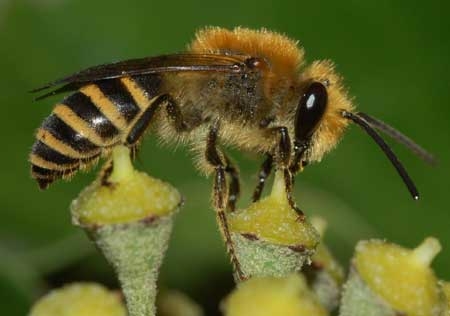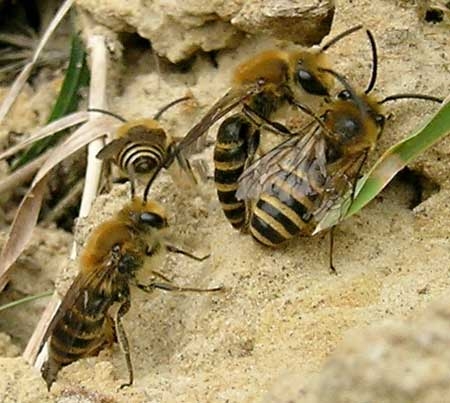Alien bee Colletes hederae reaches Cheltenham
Geoff Trevis
In recent years several species of bees have been moving northwards through Europe and arriving in Britain. In 1993 a mining bee from southern Europe was described as new to science and named Colletes hederae Schmit and Westrich, 1993. It spread rapidly across the continent and is now fairly common in countries bordering the English Channel and southern North Sea. It was first recorded in England in Dorset in 2001 and, as on the continent, it has spread rapidly, first along the Channel coast counties from Cornwall to Kent and then more slowly to Wiltshire, Somerset, Surrey and Essex. This year, 2011, the bee was recorded from a site near Cheltenham and thus could be in Worcestershire within the next two or three years (or sooner!).
Colletes hederae has a late summer flight period from early September until, in warm years, early November when it will be found foraging on its only known forage plant, Ivy Hedera helix. It nests in large aggregations in loose, sandy soil, with minimal vegetation, on south facing banks. This will be a species to look out for next year but if anyone has seen aggregations of bees looking like the one illustrated I would be glad to hear of it via the Worcestershire Biological Records Centre (Fig. 1.and Fig. 2.).
Images
Fig. 1. Colletes hederae. Anonymous
Fig. 2. Colletes hederae males. Andy Phillips

